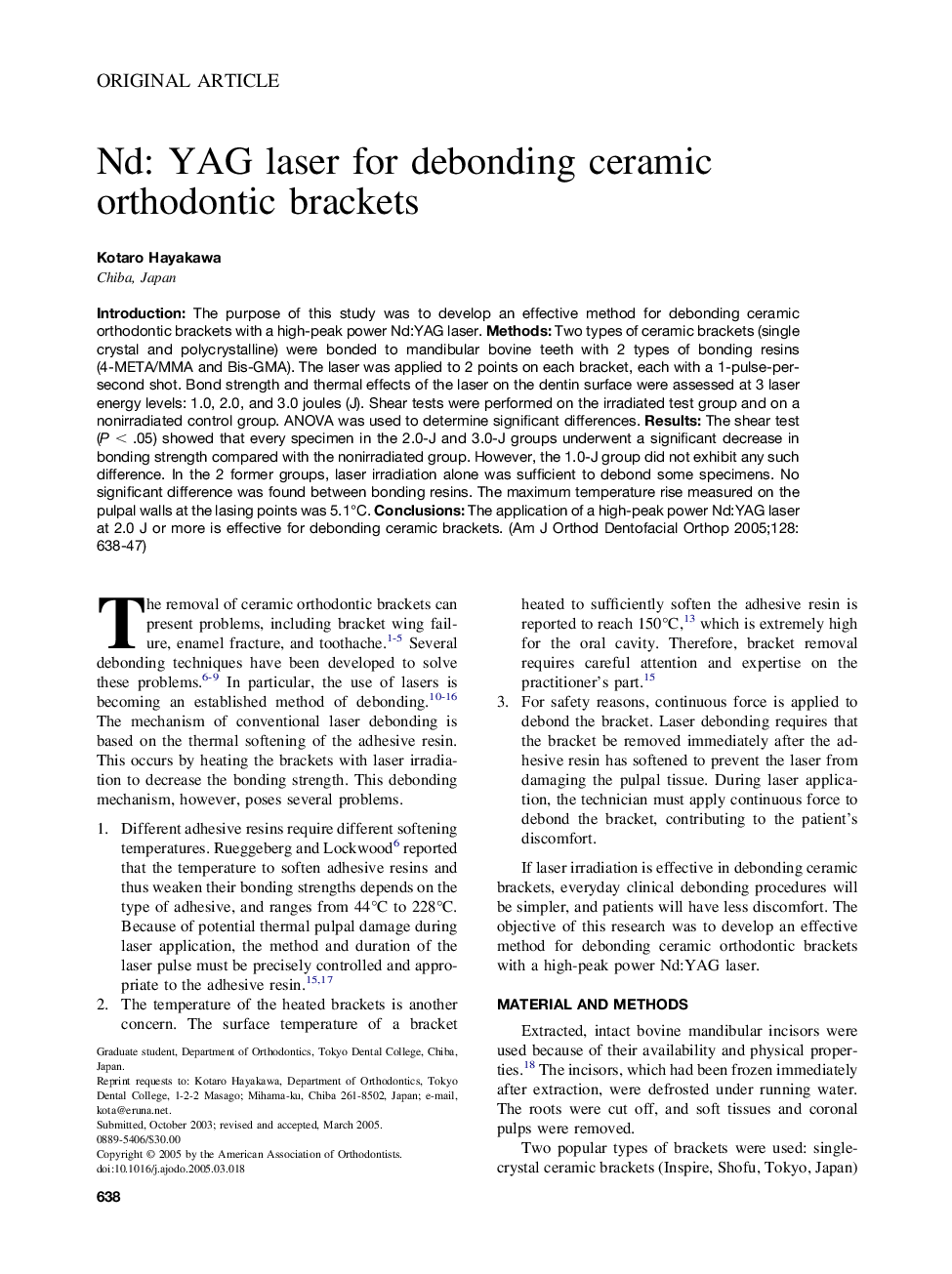| Article ID | Journal | Published Year | Pages | File Type |
|---|---|---|---|---|
| 9992548 | American Journal of Orthodontics and Dentofacial Orthopedics | 2005 | 10 Pages |
Abstract
Introduction: The purpose of this study was to develop an effective method for debonding ceramic orthodontic brackets with a high-peak power Nd:YAG laser. Methods: Two types of ceramic brackets (single crystal and polycrystalline) were bonded to mandibular bovine teeth with 2 types of bonding resins (4-META/MMA and Bis-GMA). The laser was applied to 2 points on each bracket, each with a 1-pulse-per-second shot. Bond strength and thermal effects of the laser on the dentin surface were assessed at 3 laser energy levels: 1.0, 2.0, and 3.0 joules (J). Shear tests were performed on the irradiated test group and on a nonirradiated control group. ANOVA was used to determine significant differences. Results: The shear test (P < .05) showed that every specimen in the 2.0-J and 3.0-J groups underwent a significant decrease in bonding strength compared with the nonirradiated group. However, the 1.0-J group did not exhibit any such difference. In the 2 former groups, laser irradiation alone was sufficient to debond some specimens. No significant difference was found between bonding resins. The maximum temperature rise measured on the pulpal walls at the lasing points was 5.1°C. Conclusions: The application of a high-peak power Nd:YAG laser at 2.0 J or more is effective for debonding ceramic brackets.
Related Topics
Health Sciences
Medicine and Dentistry
Dentistry, Oral Surgery and Medicine
Authors
Kotaro Hayakawa,
